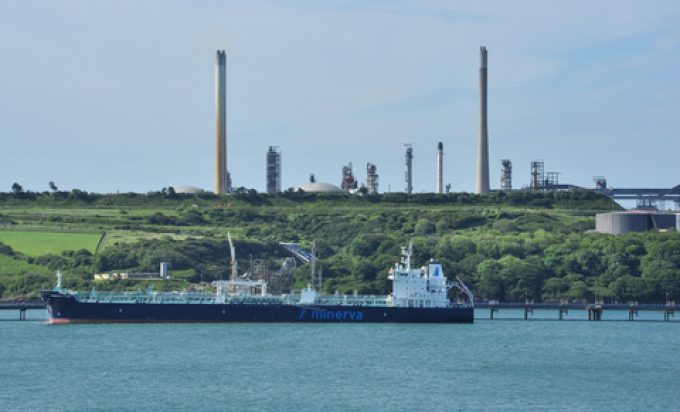European road freight stakeholders outline demands to EC
Yesterday marked the start of a new legislative term in the EU, and road freight ...
TFII: SOLID AS USUALMAERSK: WEAKENINGF: FALLING OFF A CLIFFAAPL: 'BOTTLENECK IN MAINLAND CHINA'AAPL: CHINA TRENDSDHL: GROWTH CAPEXR: ANOTHER SOLID DELIVERYMFT: HERE COMES THE FALLDSV: LOOK AT SCHENKER PERFORMANCEUPS: A WAVE OF DOWNGRADES DSV: BARGAIN BINKNX: EARNINGS OUTODFL: RISING AND FALLING AND THEN RISING
TFII: SOLID AS USUALMAERSK: WEAKENINGF: FALLING OFF A CLIFFAAPL: 'BOTTLENECK IN MAINLAND CHINA'AAPL: CHINA TRENDSDHL: GROWTH CAPEXR: ANOTHER SOLID DELIVERYMFT: HERE COMES THE FALLDSV: LOOK AT SCHENKER PERFORMANCEUPS: A WAVE OF DOWNGRADES DSV: BARGAIN BINKNX: EARNINGS OUTODFL: RISING AND FALLING AND THEN RISING

On 20 May, Transport & Environment (T&E) published a briefing, Coastal Fug: the UK’s most polluted ports, ranked in order, that ranks the UK’s most polluted ports as a result of shipping activity.
T&E’s analysis includes emissions of sulphur oxides (SOx), nitrogen oxides (NOx) and fine particulate matter (PM 2.5). The briefing provides evidence that these pollutants cause respiratory and cardiovascular disease and that the health costs of PM2.5 emissions from ships in the UK are £1.5bn per year.
The analysis finds that Milford Haven, Southampton and Immingham were the most polluted ports in 2022 for all three emissions species. The analysis also finds that just 472 ships calling at Milford Haven in 2022 produced nearly 100 times more SOx emissions than all 67,000 cars in Pembrokeshire.
In response, the British Ports Association (BPA) published what it called a rebuttal, saying that T&E’s analysis lacked “serious academic rigour” and used a “flawed methodology”. The UK Major Ports Group (UKMPG) commented “broad brush asks that lack serious objectivity”.
T&E’s analysis uses an internationally recognised methodology from the International Maritime Organization (IMO), actual ship movements from 2022 and ship technical data. Uncomfortable reading for the shipping sector perhaps, but hard, objective data nonetheless. The briefing and all its recommendations clearly target government failure to address shipping pollutant emissions and make no criticism of ports or ship operating companies.
BPA’s reaction was to criticise the methodology and defend ports’ efforts to decarbonise some of their operations. However, T&E’s analysis is of pollutant emissions from ships and we made no assessment of decarbonisation.
BPA didn’t stop there. It went on to make various claims relating to port activities, industry studies and air pollution, all but one of which are unreferenced and therefore can’t be verified. BPA’s only reference was to a Ricardo study that it used as evidence of at-berth emissions, but which uses the same basic methodology as T&E’s analysis (which BPA says is flawed).
Of T&E’s briefing, BPA said, “This report makes no attempt to acknowledge other sources of air pollution in and around ports, such as surface transport.” T&E compared pollution from ships to pollution from local cars (which BPA acknowledged twice).
BPA also said, “Air pollutant emissions from ships are limited whilst at-berth when the main engines are turned off.” T&E calculated emissions from auxiliary engines. As set out at Annex B, we followed the bottom-up methodology from the IMO 4th greenhouse gas study.
And according to BPA, “Air pollutant emissions have a very localised impact.” As referenced by T&E, research commissioned by Defra and published in 2021 found that secondary PM resulting from NOx emissions from ships is a long-range effect. The Ricardo study cited by BPA references the same effect at Section 1.
Whilst we appreciate BPA’s position is to represent ports around the country, it shouldn’t be trying to divert attention away from the very serious problem of shipping pollutant emissions in ports. While BPA may want the industry to believe that we were wrong, they provided no evidence that T&E’s analysis is incorrect or that shipping pollution is not having the detrimental effect on people’s health described in the briefing. BPA’s response is therefore not a rebuttal.
We’re pleased to be able to contribute to meaningful government action on the urgent issue of pollutant emissions produced by ships in UK ports. But industry attempts to discredit the evidence-base and to deflect from our findings don’t just risk obstructing objective discussion, they also risk delaying the unprecedented government action on shipping pollution that’s so desperately needed.
T&E welcomes the opportunity to work with industry in the development of robust evidence supporting effective policy solutions to the problem of shipping’s pollutant emissions. Our headline recommendation is for a technology-agnostic, zero-emission berth mandate in all UK ports, that should include a plan for shore power. We also suggest a revenue mechanism to help pay for it and the legal framework to make it happen. We trust that the industry sees the value in such solutions too.
This is a guest post by Jonathan Hood, T&E UK sustainable shipping manager
Comment on this article